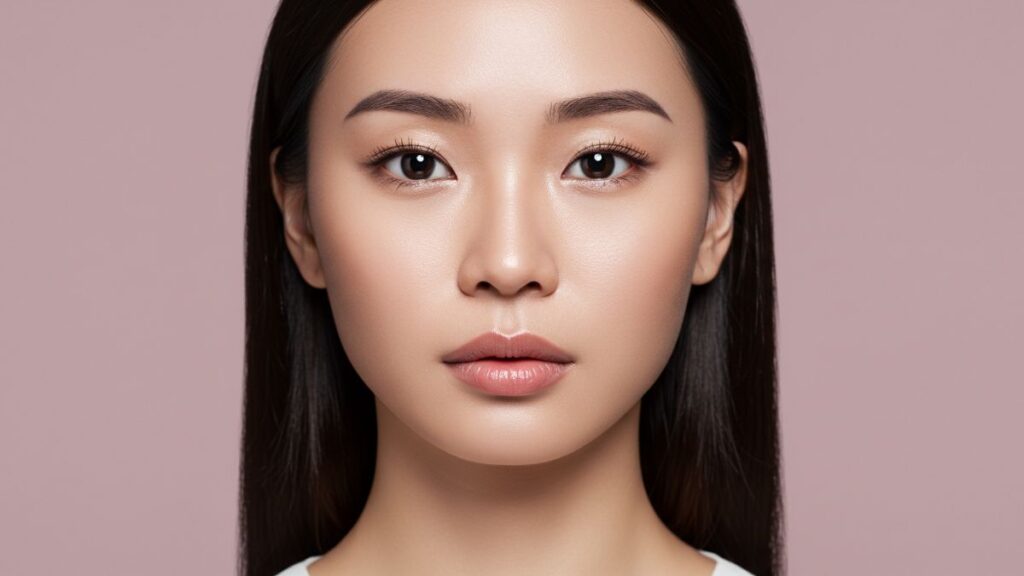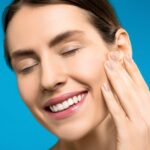Introduction
When it comes to beauty, eyes play a powerful role in defining facial aesthetics. While double eyelids are often highlighted in beauty standards, a lesser-known yet increasingly noticed feature is the triple eyelid. Characterized by a third crease above the eye, the triple eyelid can be either a natural or acquired trait and carries a range of aesthetic, cultural, and even emotional perceptions.
In many Asian countries, eyelid shapes—especially double eyelids—have long been associated with beauty, symmetry, and youthfulness. However, as global perspectives on beauty evolve, so too do the standards that define them. Triple eyelid beauty is gaining attention for its uniqueness, character, and expressive nature.
This article dives deep into the phenomenon of triple eyelids, exploring their causes, perception in beauty culture, available cosmetic treatments, and how they’re being embraced as a unique feature.
Table of Contents
-
What Is a Triple Eyelid?
-
Causes of Triple Eyelids
-
Genetics and Triple Eyelids
-
Aging and Eyelid Changes
-
Lifestyle and Environmental Factors
-
Psychological Impact and Self-Image
-
Triple Eyelids in Beauty Culture
-
Makeup Tips for Triple Eyelids
-
Surgical and Non-Surgical Solutions
-
Triple Eyelids vs. Double Eyelids
-
Embracing Natural Beauty
-
Frequently Asked Questions (FAQs)
-
Final Thoughts
What Is a Triple Eyelid?
A triple eyelid refers to the presence of three distinct folds or creases above the eye, rather than the more commonly discussed single or double eyelid. The top fold creates a segmented look on the eyelid, often becoming more pronounced when a person is tired, aging, or genetically predisposed.
Unlike double eyelids, which form a single crease and are highly sought after in many East Asian countries, triple eyelids are less discussed but equally impactful on appearance.
Some people naturally have triple eyelids, while others may develop them due to:
-
Aging and skin laxity
-
Loss of skin elasticity
-
Fat loss around the eyes
-
Overuse of eyelid tape or glue
-
Genetics and muscle tone
Causes of Triple Eyelids
There are several reasons why someone may develop a triple eyelid crease. Understanding these causes helps in determining whether it’s a permanent or temporary condition.
Aging
As people age, the skin around the eyes loses elasticity and collagen. This sagging skin can create extra folds or lines on the upper eyelid, leading to the appearance of a triple eyelid.
Genetics
Genetic predisposition can play a significant role. If your parents or grandparents have triple eyelids, there’s a higher chance you may inherit the same trait.
Fat Loss or Redistribution
Fat pads in the upper eyelid area may shrink or shift due to aging, weight loss, or illness. The reduced support can result in additional creases forming in the eyelid skin.
Repeated Use of Eyelid Tape
Many people who desire double eyelids use tape or glue to create a crease. Over time, this can stretch the skin or alter the natural shape of the eyelid, leading to additional folds.
Swelling or Inflammation
Temporary swelling from allergies, crying, or eye rubbing can cause the eyelids to fold differently, sometimes forming triple eyelids that persist beyond the initial irritation.
Want to hear more tips? Please look at our page for more informative and helpful blog posts.
Genetics and Triple Eyelids
Some people are born with naturally occurring triple eyelids. In such cases, it is simply a variation of normal anatomical structure. The skin and muscle arrangement in the upper eyelid differs slightly from person to person, which may result in extra creasing.
If the feature is inherited, it often remains consistent throughout life, although aging may cause it to deepen or become more prominent.
Aging and Eyelid Changes
As part of the natural aging process, collagen and elastin fibers in the skin degrade, leading to sagging and changes in facial contour. The eyelids are among the first areas to show these signs, particularly:
-
Drooping of the upper eyelid skin
-
Formation of new creases
-
Puffiness or hollowness
For some individuals, these changes create a triple eyelid appearance, especially in the outer corners of the eyes.
Lifestyle and Environmental Factors
External influences can also impact eyelid appearance, including:
-
Sun exposure: Accelerates skin aging
-
Smoking: Reduces blood flow and skin elasticity
-
Stress and lack of sleep: Causes puffiness and muscle fatigue
-
Diet and hydration: Influence skin texture and tone
Psychological Impact and Self-Image
How a person feels about their triple eyelid can vary widely. Some may see it as a flaw due to beauty norms that favor double eyelids. Others may embrace it as a symbol of individuality.
In recent years, beauty movements that celebrate diversity in appearance have helped reduce the stigma around features like triple eyelids. Social media influencers and makeup artists are showcasing how these eyelids can be beautiful in their own right.
Triple Eyelids in Beauty Culture
Triple eyelids are less discussed in mainstream beauty media but are increasingly part of conversations around inclusive aesthetics. Here are a few emerging trends:
-
Acceptance and Confidence: More people are learning to love their unique features rather than conforming to homogenized beauty ideals.
-
Media Representation: Individuals with triple eyelids appearing in media help normalize and validate this trait.
-
Makeup Trends: Artists are developing techniques specifically for triple eyelids, turning a perceived flaw into a canvas for creativity.
Ready to take things further? Discover our full library of content.
Makeup Tips for Triple Eyelids
Applying makeup on triple eyelids can be tricky due to the additional crease, but with the right technique, it can enhance the eyes beautifully.
Primer is Essential
Use a long-lasting primer to prevent shadow from creasing in the folds.
Tightlining Over Eyeliner
Apply eyeliner between the lashes rather than above the lash line to avoid distortion from the folds.
Light Shadow on Creases
Avoid dark eyeshadow in the deepest crease to prevent the eyes from looking tired. Instead, use lighter, shimmery shades to open up the look.
Avoid Overloading Product
Keep makeup light and blended. Too many layers can exaggerate creases.
Curl and Mascara
Use an eyelash curler and volumizing mascara to open up the eye area further and draw attention away from excess folds.
Surgical and Non-Surgical Solutions
For individuals who feel self-conscious or experience discomfort due to triple eyelids, there are both invasive and non-invasive options available.
Non-Surgical
-
Botox: Used to relax the muscles around the eyelid
-
Fillers: Plump up areas where fat has been lost, reducing the appearance of extra folds
-
Thermage or Ultherapy: Tightens the skin using radiofrequency or ultrasound
Surgical
-
Blepharoplasty (Eyelid Surgery): Removes excess skin and repositions tissue to create a smoother eyelid contour
-
Incisional or Non-incisional Double Eyelid Surgery: Can reduce or eliminate the third fold depending on the patient’s anatomy
It’s important to consult with a board-certified cosmetic surgeon to understand the risks and determine the best course of action.
Triple Eyelids vs. Double Eyelids
| Feature | Triple Eyelids | Double Eyelids |
|---|---|---|
| Number of Creases | Three distinct folds | One prominent fold |
| Common Causes | Aging, genetics, tape usage | Natural or surgical |
| Makeup Difficulty | Moderate to high | Moderate |
| Cultural Perception | Less common, more unique | Widely accepted in many areas |
| Corrective Options | Surgical and non-surgical | Often not needed |
Embracing Natural Beauty
While some may seek cosmetic options to alter their eyelids, others are leaning into the uniqueness of the triple eyelid look. In fact, the aesthetic is starting to gain attention in fashion and art photography, where asymmetry and individuality are prized.
Self-acceptance and positive representation are key to changing beauty standards. Triple eyelids are simply another way the body expresses its uniqueness. Like freckles, dimples, or birthmarks, they tell a story about your heritage, experiences, and individuality.
Frequently Asked Questions (FAQs)
1. What is a triple eyelid?
A triple eyelid is a condition where three creases appear on the upper eyelid instead of the usual single or double fold.
2. Are triple eyelids permanent?
They can be either permanent or temporary. Temporary triple eyelids may result from swelling, fatigue, or eyelid tape use.
3. Can makeup help reduce the look of triple eyelids?
Yes, with the right techniques like tightlining and light eyeshadow application, makeup can enhance the appearance and minimize the fold.
4. Is surgery the only option for correcting triple eyelids?
Not at all. Non-surgical options like fillers, Botox, and skin-tightening treatments are available and effective for many.
5. Do triple eyelids affect vision?
In rare cases, if the folds are heavy enough, they may cause vision obstruction. A medical consultation can help assess this.
Final Thoughts
The idea of triple eyelid beauty challenges conventional beauty norms and invites a broader understanding of what is truly attractive. As awareness grows, so too does appreciation for diverse facial features that make each person unique.
Whether you choose to enhance, embrace, or transform your triple eyelids, the key lies in making choices that align with your self-image and comfort. In a world rich with variation, beauty is not about perfection—it’s about authenticity.
Let your eyes tell your story, triple creases and all.







